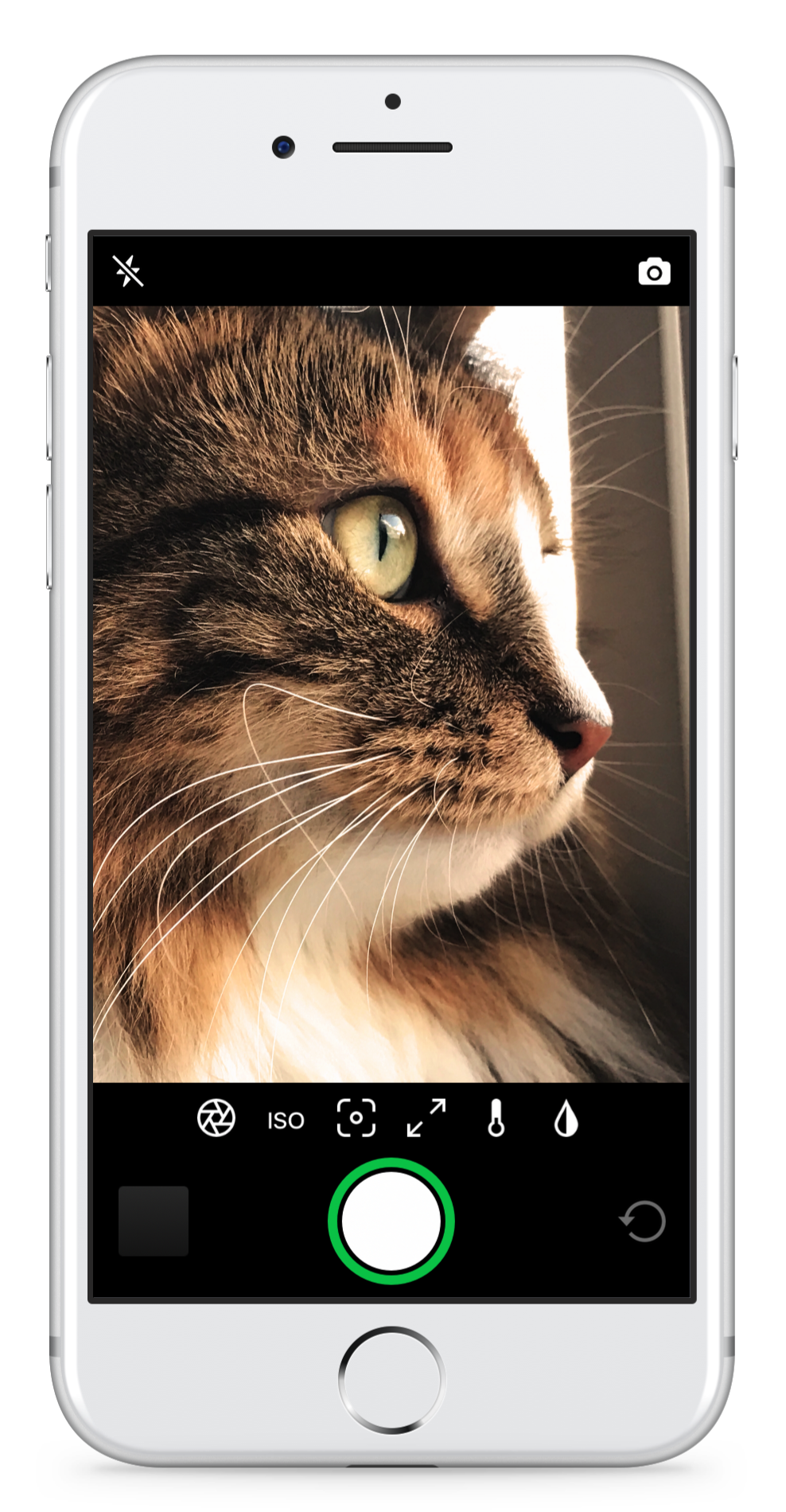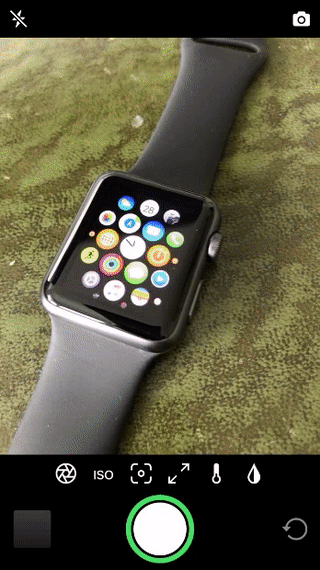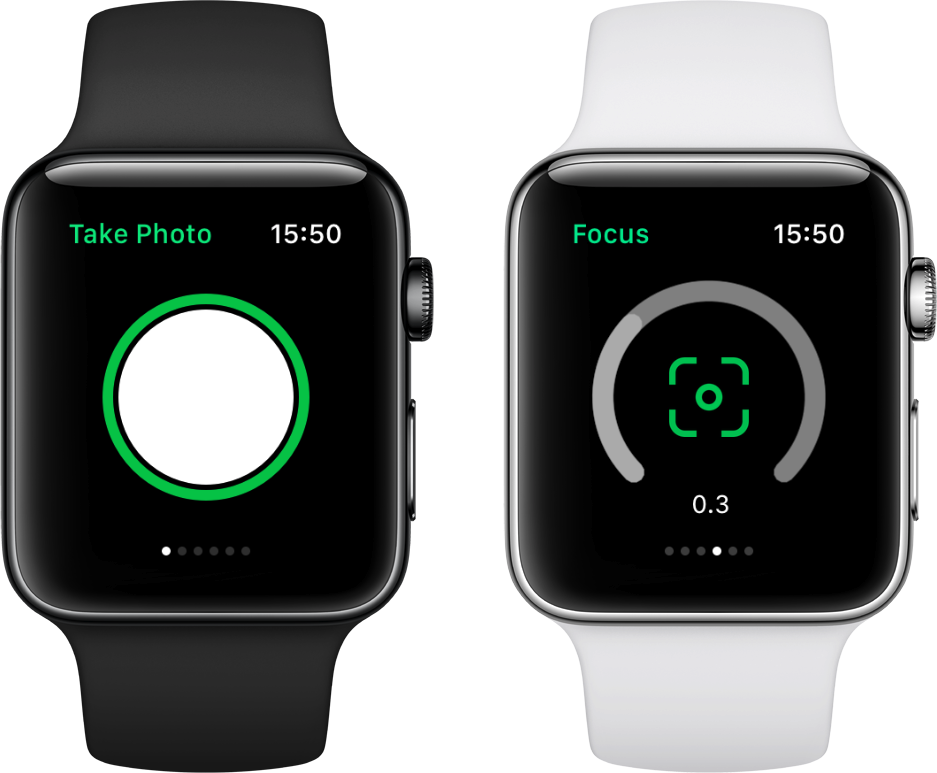Introducing Iris - Pro Camera Control for iOS
tl;dr I've released a new camera app for iPhone and Apple Watch, and you can download it for free on the App Store.
The iPhone as a Camera
As Apple are often keen to point out, the iPhone is the world's favourite camera, and with good reason too. Our iPhones go everywhere with us, and over the last few years the quality of photograph that the iPhone can capture has improved to the point where most of us will never buy a standalone camera ever again. Apple are hardly slowing down on this front either - with the introduction of iPhone 7, they added a new image signal processor capable of:
over 100 billion operations on a single photo in as little as 25 milliseconds, resulting in incredible photos and videos.
Add to this the awesome new telephoto lens on the iPhone 7 Plus, and you have a serious camera in your hands.
Where it goes wrong
However, getting the perfect photo with our iPhones is not always as straight forward as it should be. Nine times out of ten the iPhone gets everything just right straight away, which is one of the reasons it is such a joy to use. But at other times it doesn't quite do what we want - perhaps by over exposing a shot, or not quite focussing where we'd like. Sure, you can adjust these settings in the stock camera app, but it isn't always obvious how to do this. Many people don't realise that tapping on the image preview and swiping up and down adjusts the exposure, for example (go ahead, try it!). Sometimes the white balance of the shot may be off, and there's no way to fix this, apart from editing the photo afterwards. This can be a real frustration when your iPhone just doesn't seem to want to capture what you want it to.
Making the Camera Better for Casual Users
I decided to set myself a challenge. Would it be possible to improve the camera for casual users by making it easy to control all of the camera settings using only single-gesture interactions? No menus, no sliders, no check boxes, just simple gestures to give total control over the iPhone camera? Iris was the result:

Each camera control is placed immediately above the shutter button - right where our thumb naturally gravitates towards when using a camera app. The controls are for Exposure, ISO, Focus, Zoom, Colour Temperature, and Tint.
To adjust each setting, the user simply taps on one of these controls, and pans across the screen. The value is either increased or decreased depending on the direction.

That's it. Nothing more complicated than a few swipes of the thumb and you can get your photos exactly how you want them. You can now perfect your photo's exposure, focus, white balance and more, all with a few quick moves of your thumb. It couldn't be simpler.
Making the Camera Better for Professionals
This is great for casual and more serious photography, but what about pro photographers? Of course professionals use digital and analogue SLR cameras for the best results, but something at the launch of the iPhone 7 stuck out during the presentation on photography. It was a quote from Christopher Anderson:
This iPhone is going to be a part of any professional's repertoire of tools.
This got me thinking - how can the iPhone be made to work better as a tool for professional users? It didn't take long to settle on an idea.
A shutter release for the 21st century
It is common practice for professional photographers to set up their cameras on a tripod, and use a remote shutter release to trigger when photos are taken.

Using a remote shutter release has the benefit that the camera does not need to be touched when taking a photo, so there is zero chance of any camera shake showing up in the photos that are taken. The photographer can also move around when directing the scene that they are shooting.
However, with today's technology, we can do a little bit better. Wouldn't it be great if as well as taking photos, your shutter release could also change all of the camera settings we discussed earlier - exposure, focus, colour temperature etc? That's exactly what Iris for Apple Watch is.

Iris for Apple Watch doesn't simply function as a shutter release, but allows for the same total control over the camera as the controls on the iPhone app. This means the scene can be adjusted without anything getting in the way of the preview on the phone screen, allowing the photographer to concentrate solely on the image they are going to capture.
Wrap Up
Starting today, Iris is available as a free download on the App Store. If you enjoy taking photos using your iPhone, give it a download and flex those creative muscles with some new compositions.